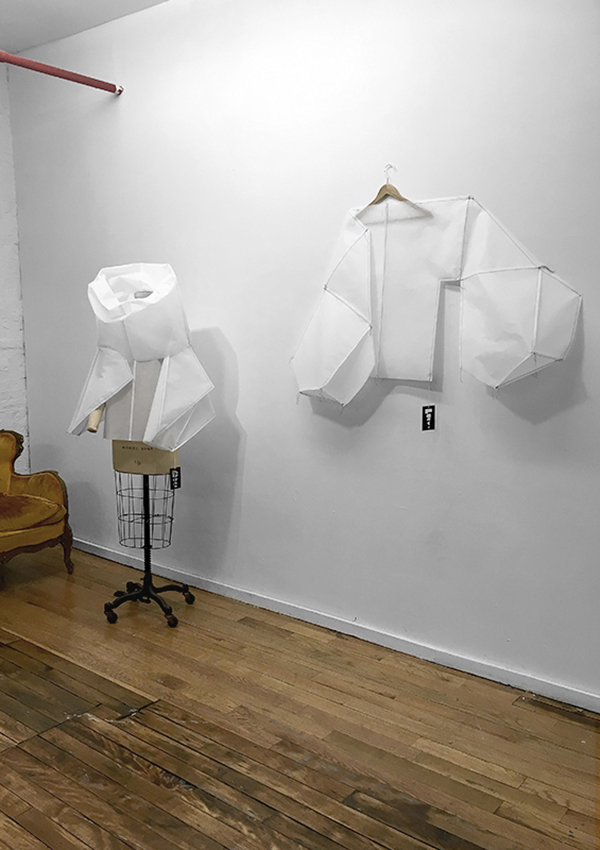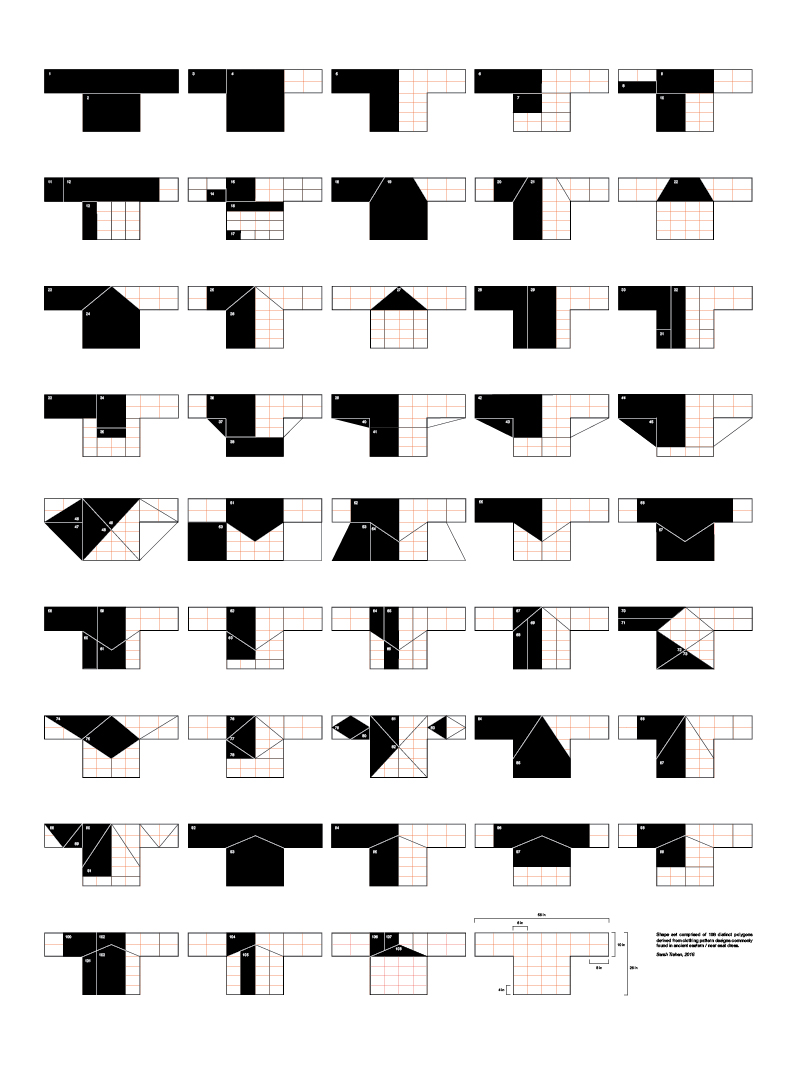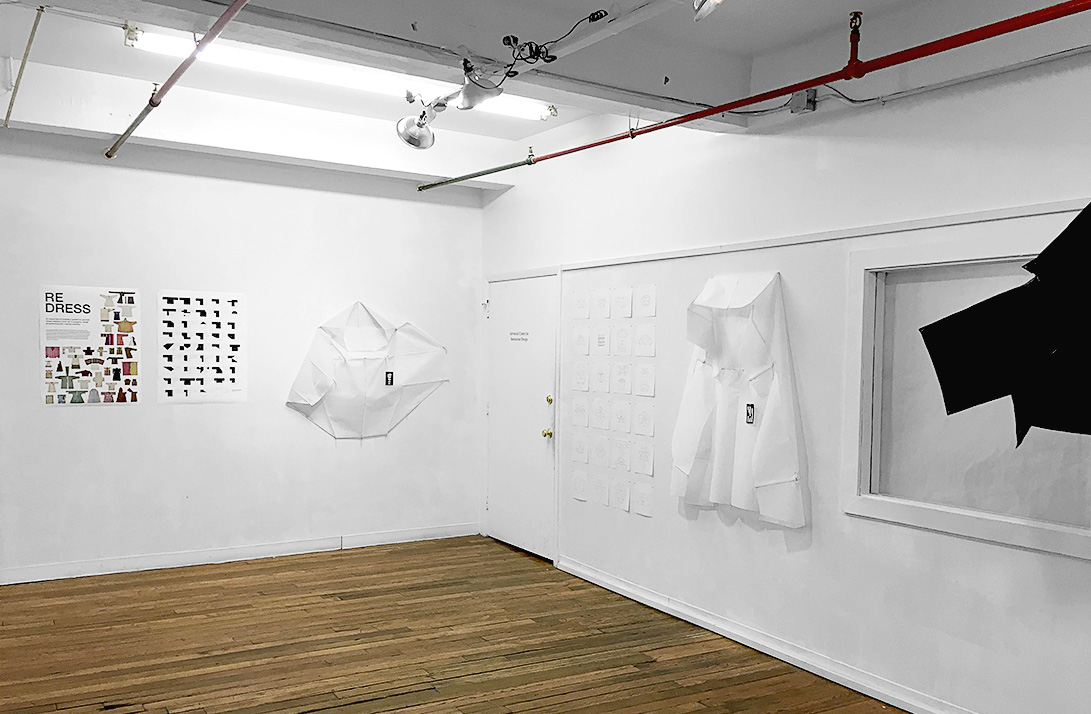ReDress
solo exhibition, Industry Lab, 2016
The culminating show for my residency at Industry Lab in Cambridge, MA; these were the results of a three month experiment in building a system for garment design using a fixed set of polygons, simple programming and a sewing machine.
As an artist my medium of choice is often cloth, used both as a physical object and interpreted through other digital media like photography and video. This project began as an exercise in design and learning how to code, filtered through the lens of my interest in clothing and methods of clothing construction. The systems-based design work of Nanni Strada and Sol Lewitt inspired the work shown here, as well as the simplicity and flexibility of early Eastern clothing designs. The patterns for these historical garments heavily informed the creation of the group of shapes that are the building blocks of the objects displayed in this collection.
For this experiment, I created a library of 108 polygonal shapes derived from research done on early Eastern clothing designs. I wrote a simple program using p5.js that randomly selected 5 shapes from this library and put the selected shapes together in various ways. The resulting combinations were collected and curated; the most successful ones were then mirrored across the x-axis to form one side of these two sided garments. The resulting mirrored combinations are scaled-up and printed as full-size paper patterns to be used for garment construction. The initial garments produced for this show were a selection of the most wearable of many, many random combinations generated by the computer.
As an artist my medium of choice is often cloth, used both as a physical object and interpreted through other digital media like photography and video. This project began as an exercise in design and learning how to code, filtered through the lens of my interest in clothing and methods of clothing construction. The systems-based design work of Nanni Strada and Sol Lewitt inspired the work shown here, as well as the simplicity and flexibility of early Eastern clothing designs. The patterns for these historical garments heavily informed the creation of the group of shapes that are the building blocks of the objects displayed in this collection.
For this experiment, I created a library of 108 polygonal shapes derived from research done on early Eastern clothing designs. I wrote a simple program using p5.js that randomly selected 5 shapes from this library and put the selected shapes together in various ways. The resulting combinations were collected and curated; the most successful ones were then mirrored across the x-axis to form one side of these two sided garments. The resulting mirrored combinations are scaled-up and printed as full-size paper patterns to be used for garment construction. The initial garments produced for this show were a selection of the most wearable of many, many random combinations generated by the computer.

Prototype garment in felted polyester, dimensions variable.

Prototype garment in felted polyester, dimensions variable.

Exhibition View.

Protoype garment in felted polyester beside a selection of generated garment designs.

Garment Tag detail.

Detail of generated garment designs.
 Exhibition view.
Exhibition view. Vinyl installation using garment pattern shapes from my Shape Library.
Vinyl installation using garment pattern shapes from my Shape Library.
Show Poster Design, 18” x 24”, Inkjet Print.

Shape Library, 18” x 24”, Archival inkjet print.

Exhibition view.